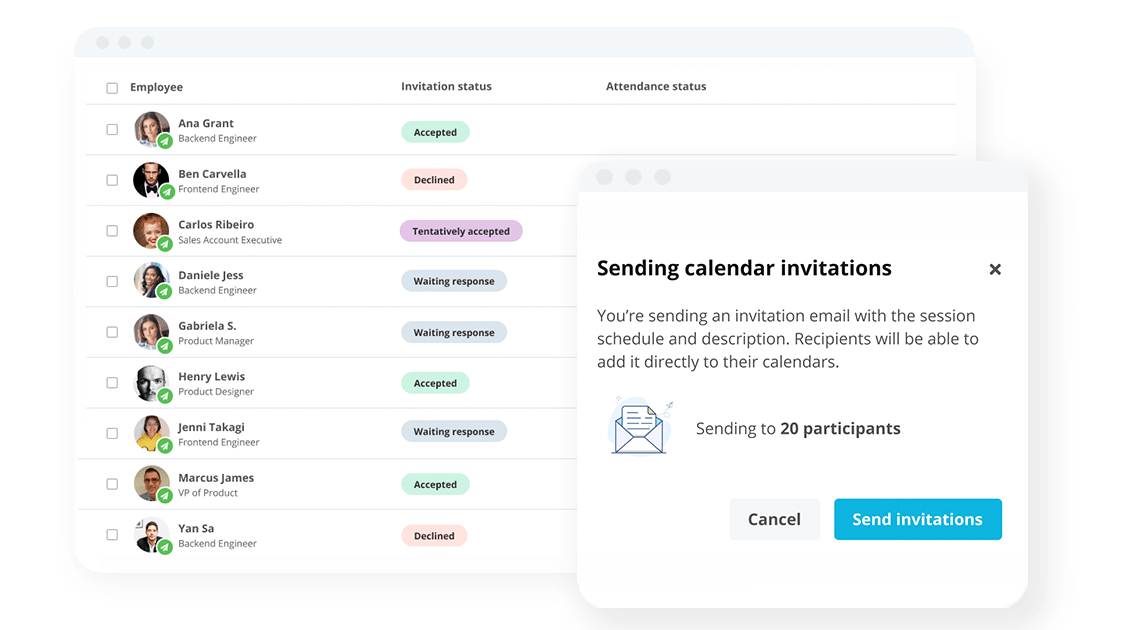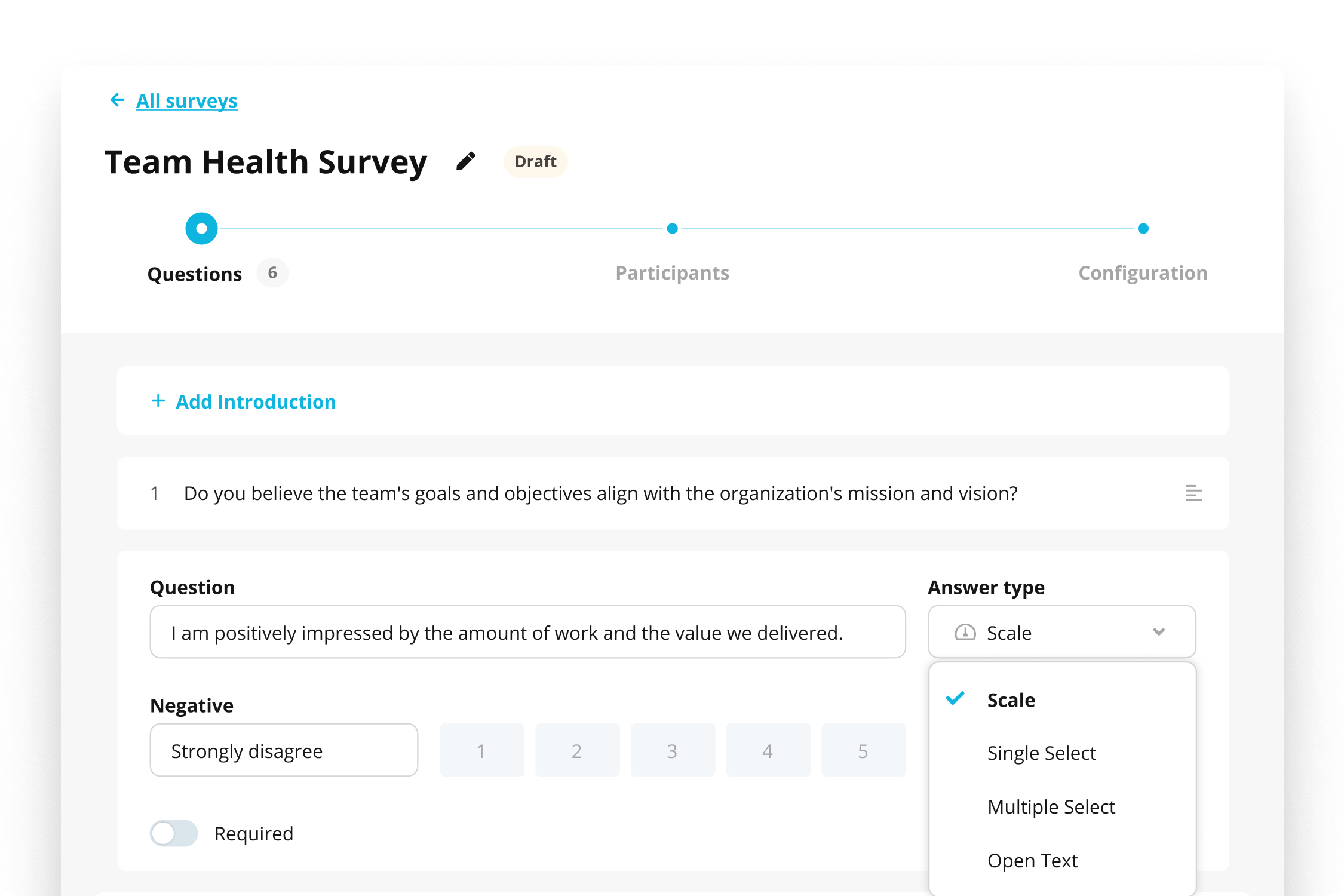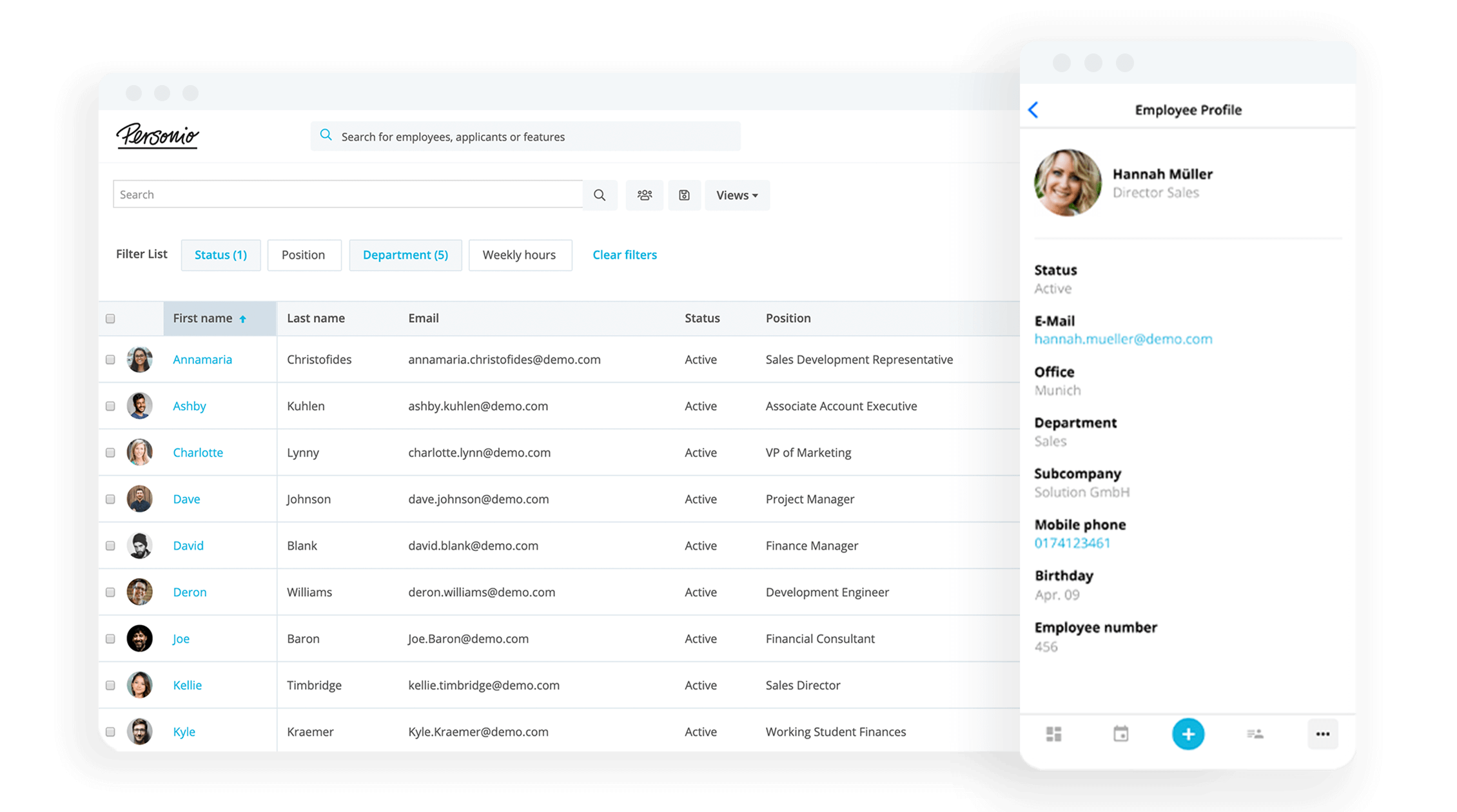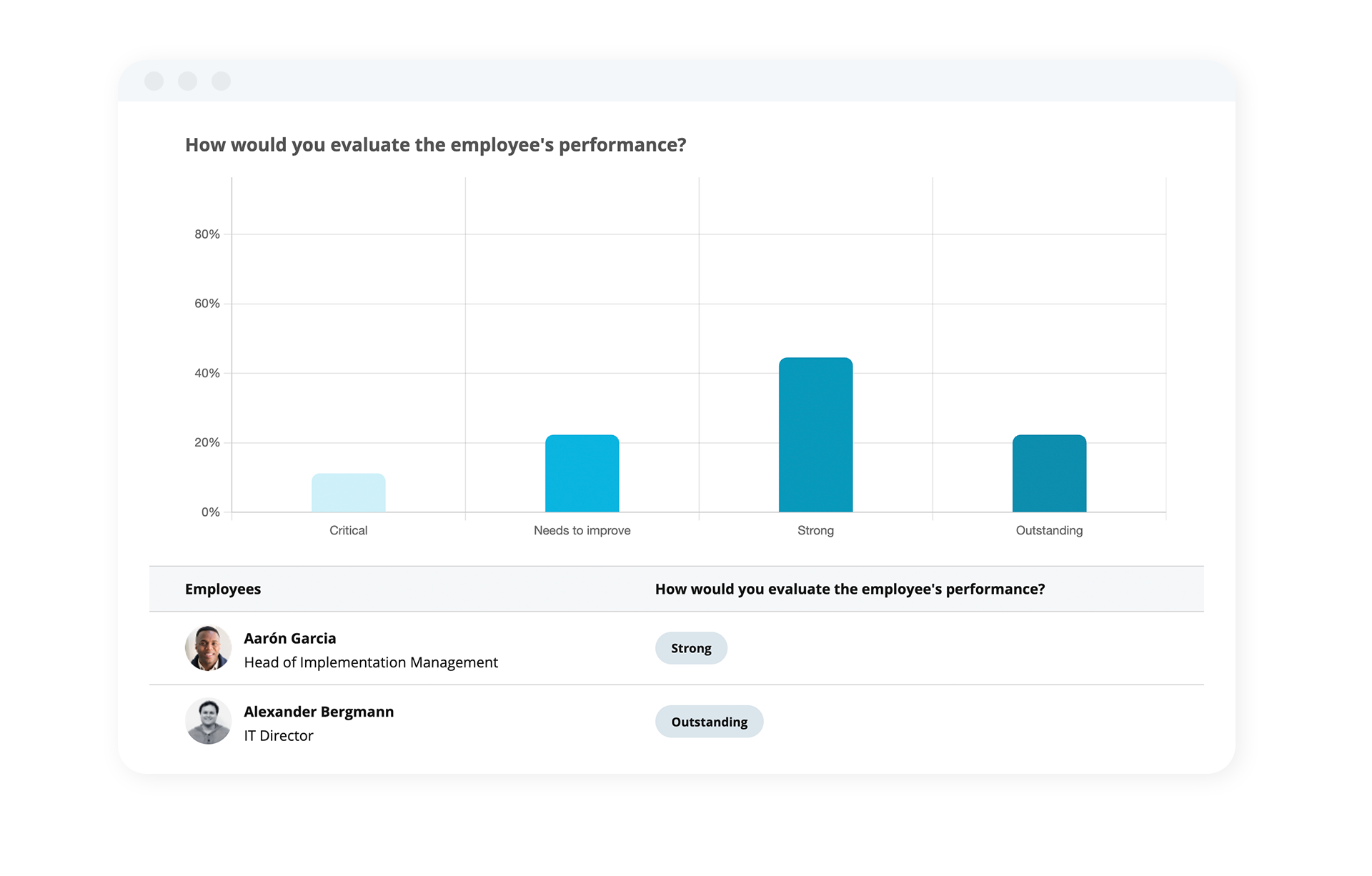
Give the Right Training at the Right Time
Simplify your staff development with centralised training management.
How to Conduct a Training Needs Analysis in 8 Simple Steps

Is a training needs analysis the key to employee performance that your organization? That depends on where things currently stand. Here's our guide to why you might need one, and how to perform one, today.
Employee performance that puts employees first. Learn more today.What is a training needs analysis (TNA)?
A training needs analysis is a process that determines which type of training an employee needs to thrive in their role, fill a knowledge/skill gap, or develop their learning in order to improve their job performance.
Typically, the analysis focuses on specific training content that needs to be completed within a certain time period, instead of focusing on an employees’ long-term training plan.
There are three different types of training needs analyses that you can perform, depending on your goals:
Organizational training needs analysis | Looks at the company as a whole to determine which overarching training programs are missing or lacking. |
Team training needs analysis | Centers on one department’s specific training requirements and deficiencies. This training also typically includes programs focused on collaboration and team-building to inspire motivation and group problem-solving. |
Individual training needs analysis | The most customised assessment, which focuses on an individual employee’s career goals and typically begins with a performance review or one-on-one evaluation. |
Training needs analysis vs. training needs assessment
While the terms are often used interchangeably, training needs analysis and training needs assessment are distinct steps in the process of developing effective training programmes.
Here's how we'd go about outlining the differences:
Feature | Training Needs Assessment | Training Needs Analysis |
|---|---|---|
Focus | Identifying gaps between current and desired performance. | Understanding the root causes of the identified gaps. |
Outcome | Identifies needs for improvement. | Recommends solutions to address the needs. |
Example | "Sales team is missing their quota." | "Sales team lacks knowledge about new product features, leading to missed opportunities." |
In simpler terms, a needs assessment is like diagnosing an illness, while a needs analysis is like determining the cause of the illness and prescribing treatment.
How businesses benefit from training needs analyses
Your company can only scale and improve if your employees do, too. Implement the proper training via a training needs analysis, and you’ll see a ripple effect that positively impacts almost every aspect of your business:
1. Solve issues before they happen
Sixty-one percent of working-age adults in the UK don’t believe they have all of the workplace skills they’ll need for the next five years. And, without proper training, they (and you) will encounter issues well before then.
Through a training needs analysis, you can identify knowledge gaps and skill deficiencies before they create issues.
You can also determine which training needs are the most critical and urgent, develop a training matrix and prioritise those programs in your training schedule to proactively overcome obstacles.
2. Uncover new training needs
To put it simply: You don’t know what you don’t know. By conducting a training needs analysis for each of your company’s roles and departments, you’ll uncover needs and opportunities for upskilling you wouldn’t have been exposed to otherwise.
3. Create impactful training plans
Training plans often get overrun with programs and courses you hope will work, or with stale content that hasn’t been updated to fit the current position. But once you complete your analyses, you can fill the next quarter, year, and beyond with valuable courses and HR trainings that speak to your employees’ exact needs and wants.
4. Stay focused on business goals
Every piece of training you produce should be crafted in pursuit of your company’s goals. But over time, the two can stray further and further apart. Performing training needs analyses allows you to compare your current training modules against your company’s goals to ensure they’re on the same track.
5. Provide the right training to the right people
No one wants to be stuck in a training session they don’t need. After you complete your training needs analyses, you’ll know exactly who needs to attend the training and who doesn’t, saving everyone involved time and resources so they can focus on their work or on their own targeted training programme.
6. Have better performing employees
Effective reskilling of employees can lift productivity by six to twelve percent, while overall learning and development can improve skills, service, and motivation.
Employee training is also one of the key drivers of employee engagement, and when learners are more engaged, they’re more likely to find new roles within their organisation, increasing your retention rates.
7. Save money, time and resources
Instead of wasting money and resources creating, managing, and reviewing training programs that aren’t effective, you can put your budget towards building constructive programs that provide a better return on investment.
Develop Staff With Ease

Track training attendance, progress and compliance across your organisation from one central, easy-to-use tool.
Conducting a training needs analysis in 8 steps
You want to create impactful training programs that power employee performance. And to do that, you need to conduct a training needs analysis based on historical data, first-hand experiences, and future goals. Here’s how:
1. Determine your goals
Your organisation’s goals are constantly growing and changing, as are the roles and responsibilities of your employees. Compare your current training programs and outcomes with your company’s short- and long-term goals to ensure they’re aligned.
Next, determine the specific goals you want to achieve through employee training. Consider:
The outcomes and improvements you’re expecting.
How you will measure progress, success, or failure.
If you’ll need more than training to achieve the goal.
You should also establish the level of expertise you expect the learner to achieve from the training:
Awareness: They gain a basic knowledge of a topic.
Application: They learn how to complete a specific task.
Mastery: They learn how to complete a task (or become knowledgeable on a topic) to the degree that they can teach it to someone else afterward.
2. Run a cost analysis
Part of your planning should include calculating the costs and return on investment you expect from creating, conducting, and analysing the training programs.
Typical costs include training time, training content development (whether in-house or outsourced), training evaluation time, content delivery, lost productivity, and travel and administrative expenses, if applicable.
3. Select candidates

Next, determine which employees or departments need a training analysis. Survey employees to gain insights into their skill levels and training desires, request feedback from managers and leaders, and gather reviews from managers, peers, and customers to determine skill gaps and knowledge deficiencies.
Review your findings to identify the employees or departments that would benefit most from improved training at this time.
4. Identify necessary skills

Once you’ve chosen your candidate(s), review their role and identify the skills required for an employee to perform the job successfully.
If you’ve already conducted job analyses at your company, refer to the documentation as it should outline, in detail, the necessary skills, tasks, responsibilities, and qualifications for the role.
5. Assess skill levels

Next, measure the employee’s current knowledge and skill level through assessments, quizzes, and testing.
Compare the results against the required skills for the job. With this information—along with your surveys, assessments, and reviews—you’ll see what skill gaps and knowledge deficiencies are hindering the role or department. Then, you can start planning a training program that addresses it.
6. Find the experts
Locate subject matter experts within your company who know the ins and outs of the training topic, and recruit them as needed to plan out your training program. They’ll be able to give you the most recent and useful information, which you can use to design your program and make it as beneficial to the learner as possible.
7. Design and deliver your training programme

Now, it’s time to build the training program that bridges your employee’s skill gaps and powers their performance. Your training approach should be tailored to your employee’s preferred learning style, their goals, the business’s goals, and your established training methods.
Your training could include coaching or mentoring; online learning with experiential components, micro-learning modules, and games; on-the-job learning; books and reading materials; or conferences.
8. Regroup, review, refine
As your team and business goals evolve, so should your training. After you’ve completed a training needs analysis and the employee has finished their training program, review the outcomes and finesse your approach as needed:
How did the training analysis inform your training program development?
How did the training improve employee performance?
How was the learner’s experience, and how can it be improved?
How did the training push the company towards achieving their goals?
What is the return on investment, and how can it be improved?
Simplify the process with Personio
A training needs analysis requires a lot of information gathering, data, and cross-company communication. It can get overwhelming quickly if you don’t have the proper systems and software in place.
To help you out, we at Personio have created software products that streamline the process and get you one step closer to impactful training and powerful employee performance.
We have you covered, whether you want to compile and analyse data, track and optimize employee performance, send and receive employee feedback, or you just need a place to organise all of your documents.
Develop Staff With Ease

Track training attendance, progress and compliance across your organisation from one central, easy-to-use tool.
